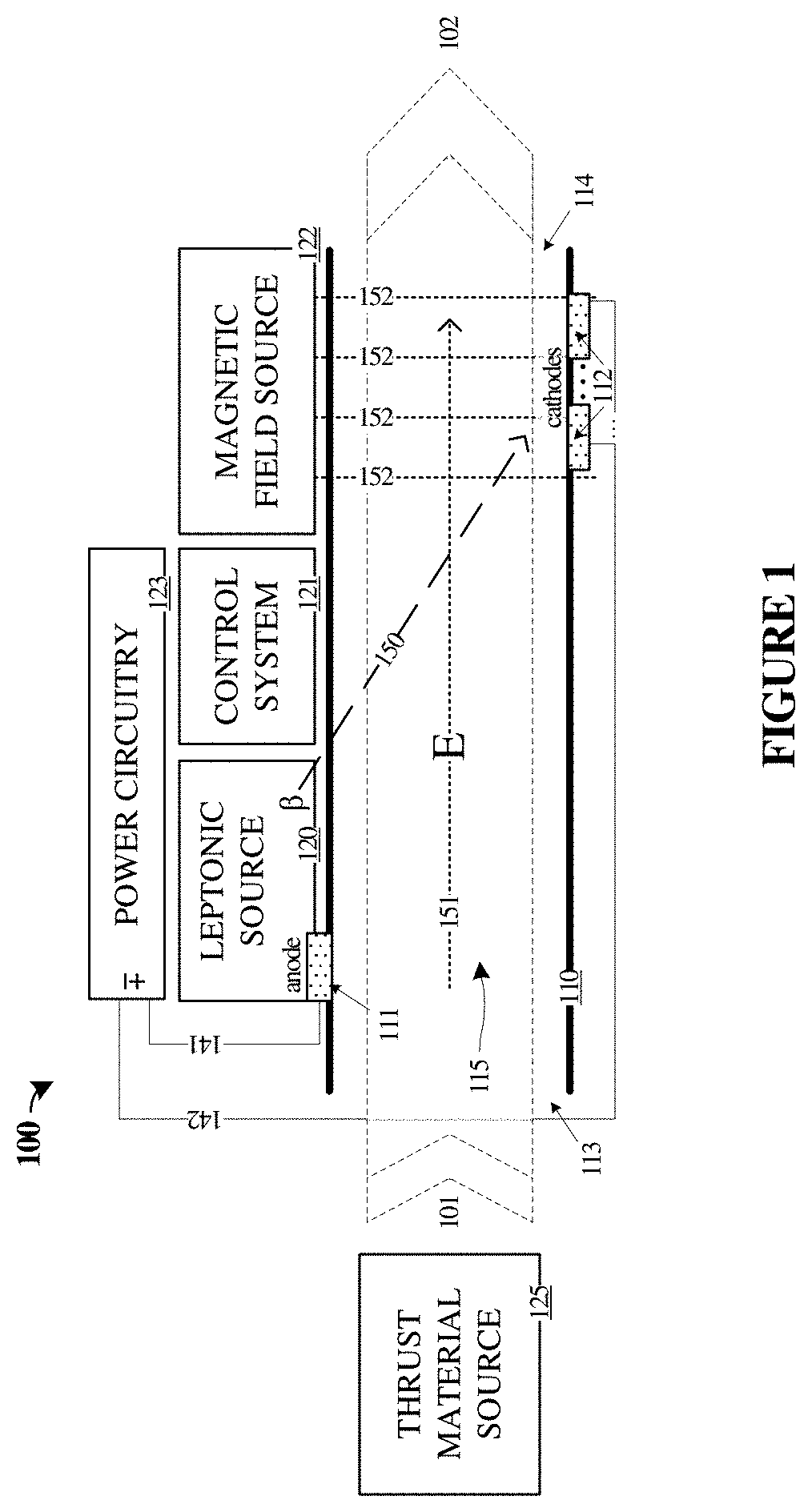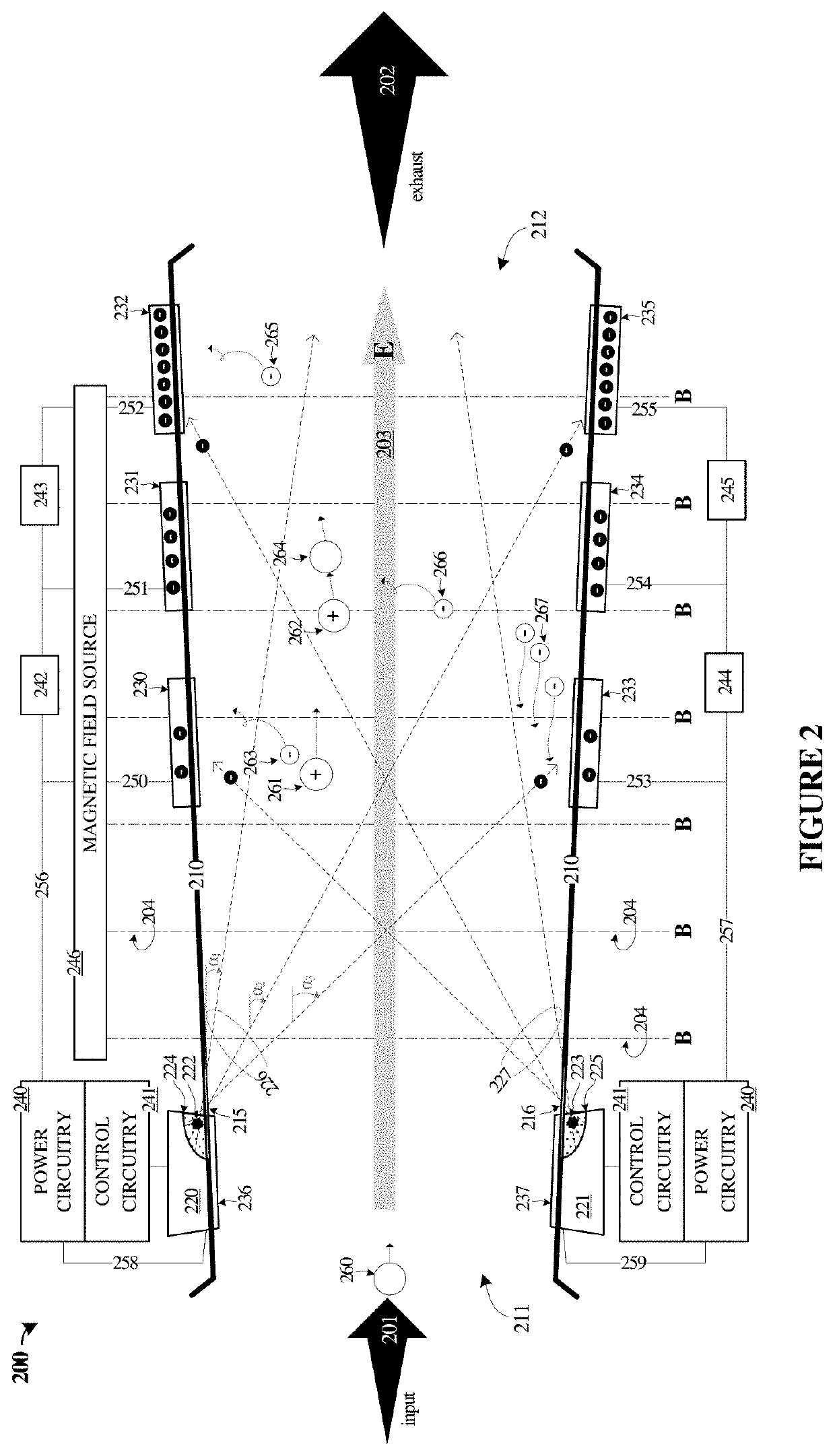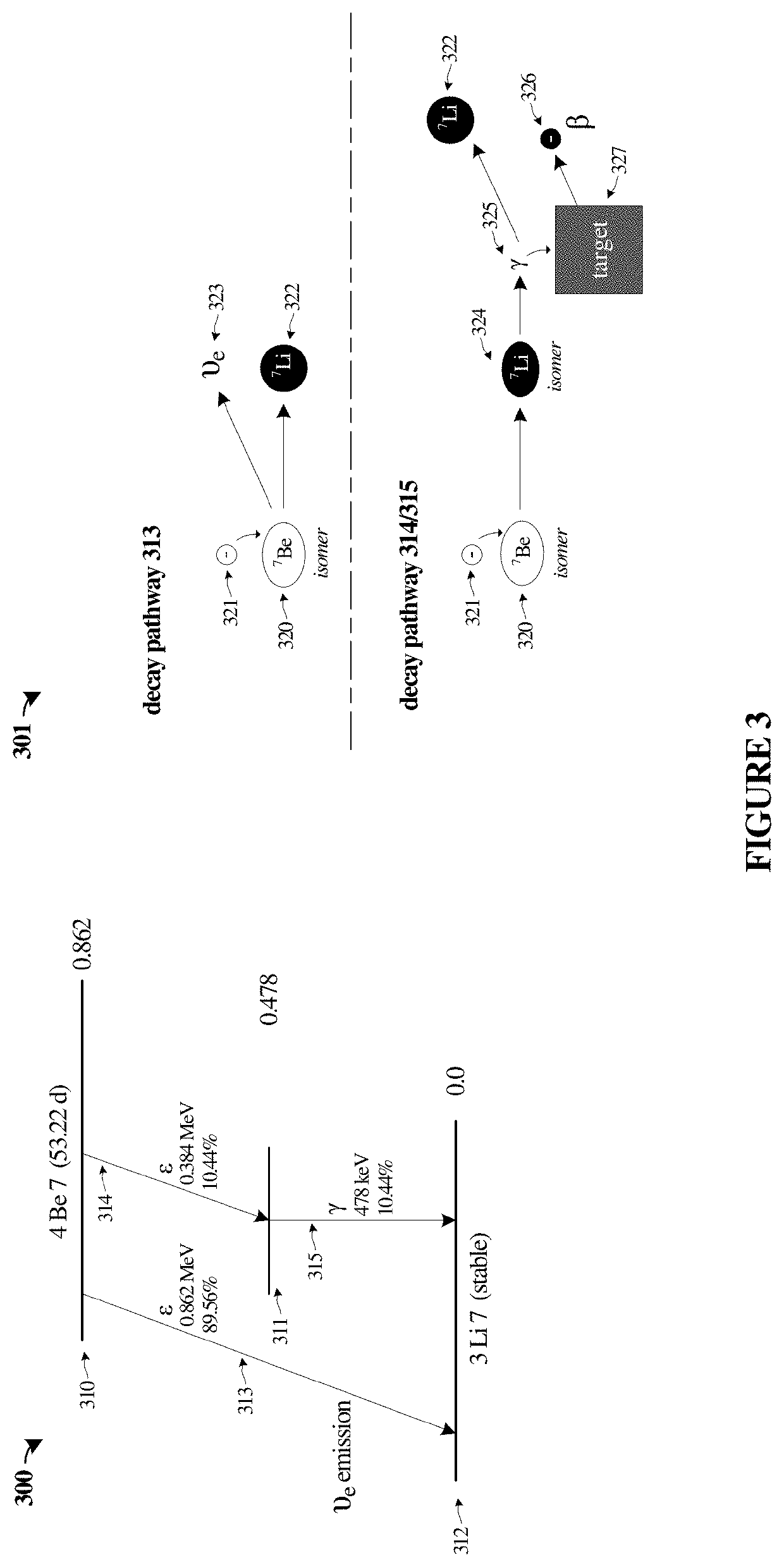Plasma Engine With Leptonic Energy Source
a technology of leptonic energy source and engine, which is applied in the direction of machines/engines, cosmonautic vehicles, transportation and packaging, etc., can solve the problems of electrode erosion, limited specific impulse, and low propellant usag
- Summary
- Abstract
- Description
- Claims
- Application Information
AI Technical Summary
Benefits of technology
Problems solved by technology
Method used
Image
Examples
Embodiment Construction
[0022]The description herein provides improvements to the performance of engine systems, propulsion systems, and associated power sources for such systems. Discussed herein are leptonic fuels, a-thermal propulsion, and direct use of leptonics. Distinct from fission or fusion, a special class of nuclear decay interactions is called beta decay. Nuclear beta decay occurs in three ways, beta−, beta+, and EC (electron capture). In these decays, a nuclear neutron (or proton) changes into a nuclear proton (or neutron) with the ejection of neutrinos and electrons (or positrons). Leptonic fuels are distinguishable from chemical fuels and from ‘hadronic’ fuels of fission, fusion, and related concepts. Leptonic fuels or “leptonics” enable specific impulse (ISP) levels of tens of thousands of seconds and higher.
[0023]In one example of leptonic fuels, nuclear isomers can be employed for energy storage. Although a naturally stable isomer state might be employed, the examples herein can employ for...
PUM
 Login to View More
Login to View More Abstract
Description
Claims
Application Information
 Login to View More
Login to View More - R&D
- Intellectual Property
- Life Sciences
- Materials
- Tech Scout
- Unparalleled Data Quality
- Higher Quality Content
- 60% Fewer Hallucinations
Browse by: Latest US Patents, China's latest patents, Technical Efficacy Thesaurus, Application Domain, Technology Topic, Popular Technical Reports.
© 2025 PatSnap. All rights reserved.Legal|Privacy policy|Modern Slavery Act Transparency Statement|Sitemap|About US| Contact US: help@patsnap.com



